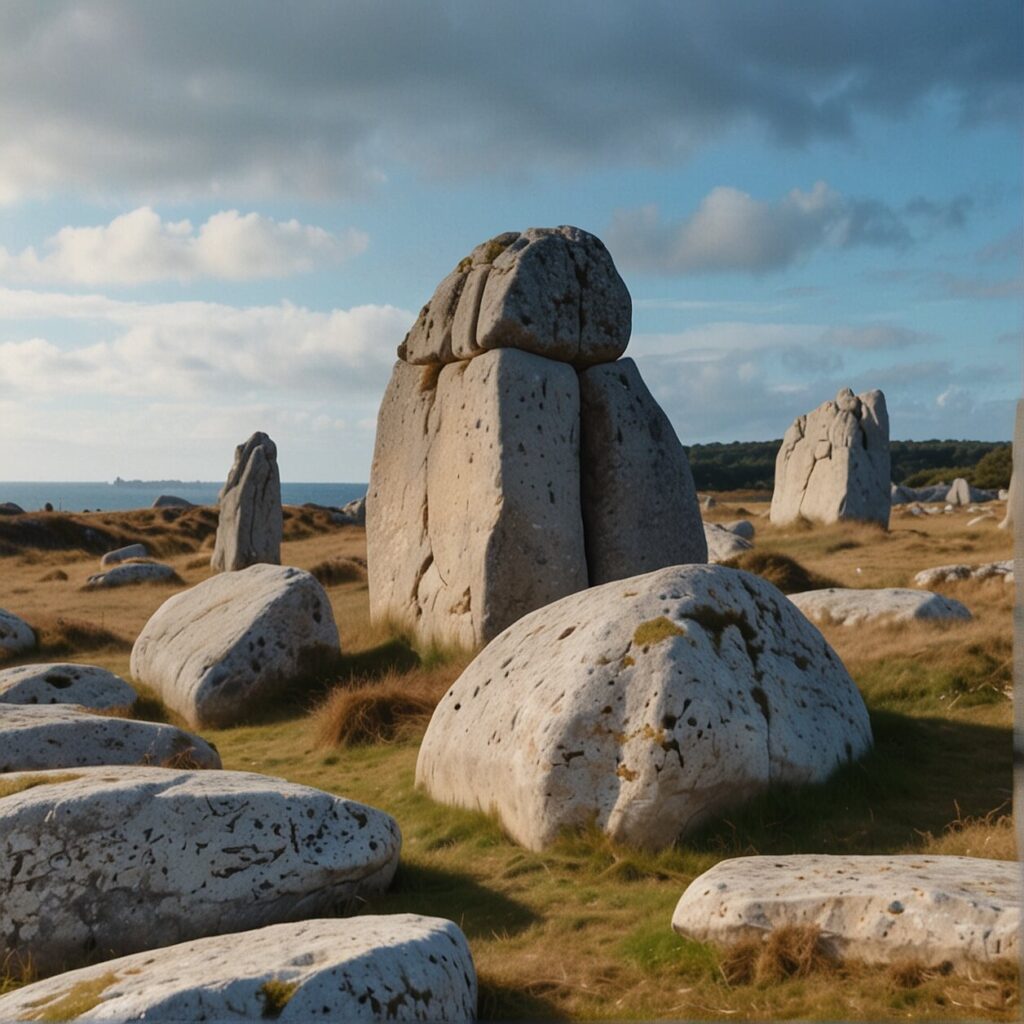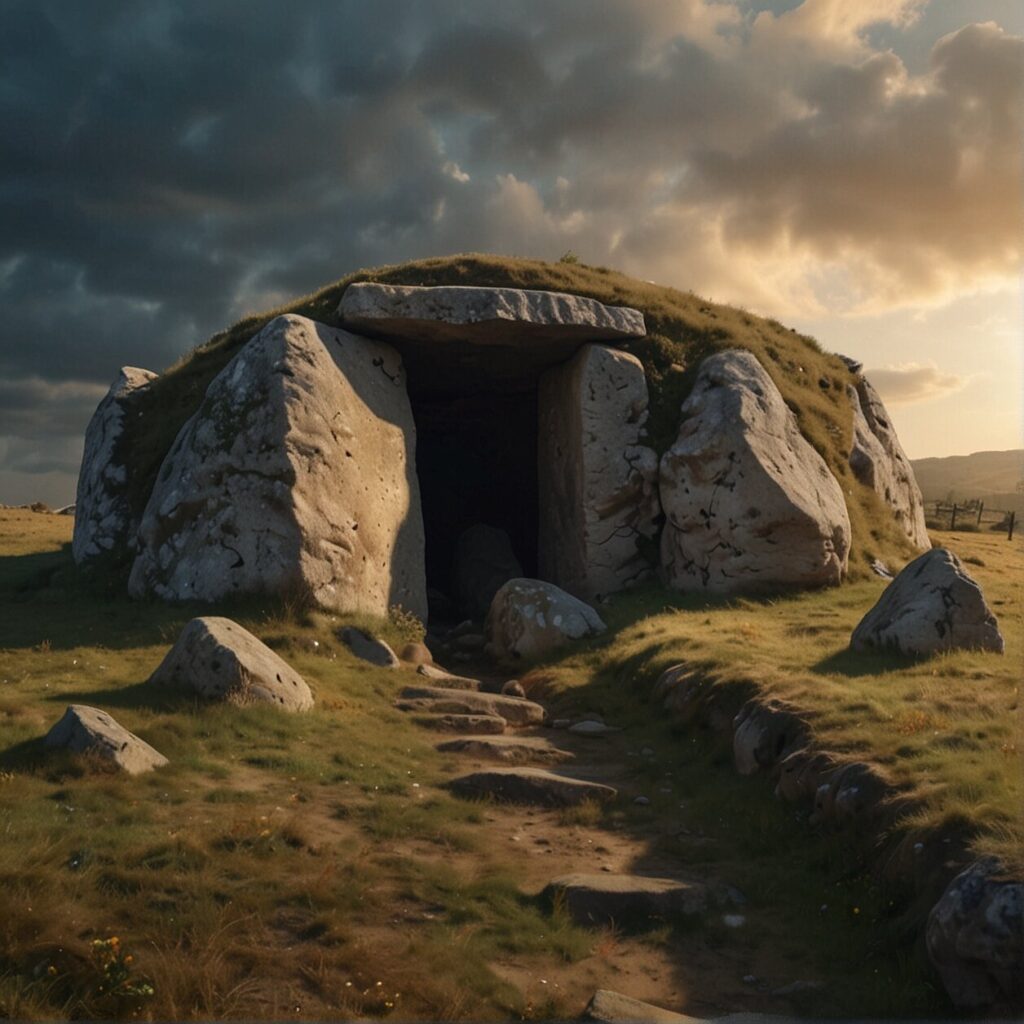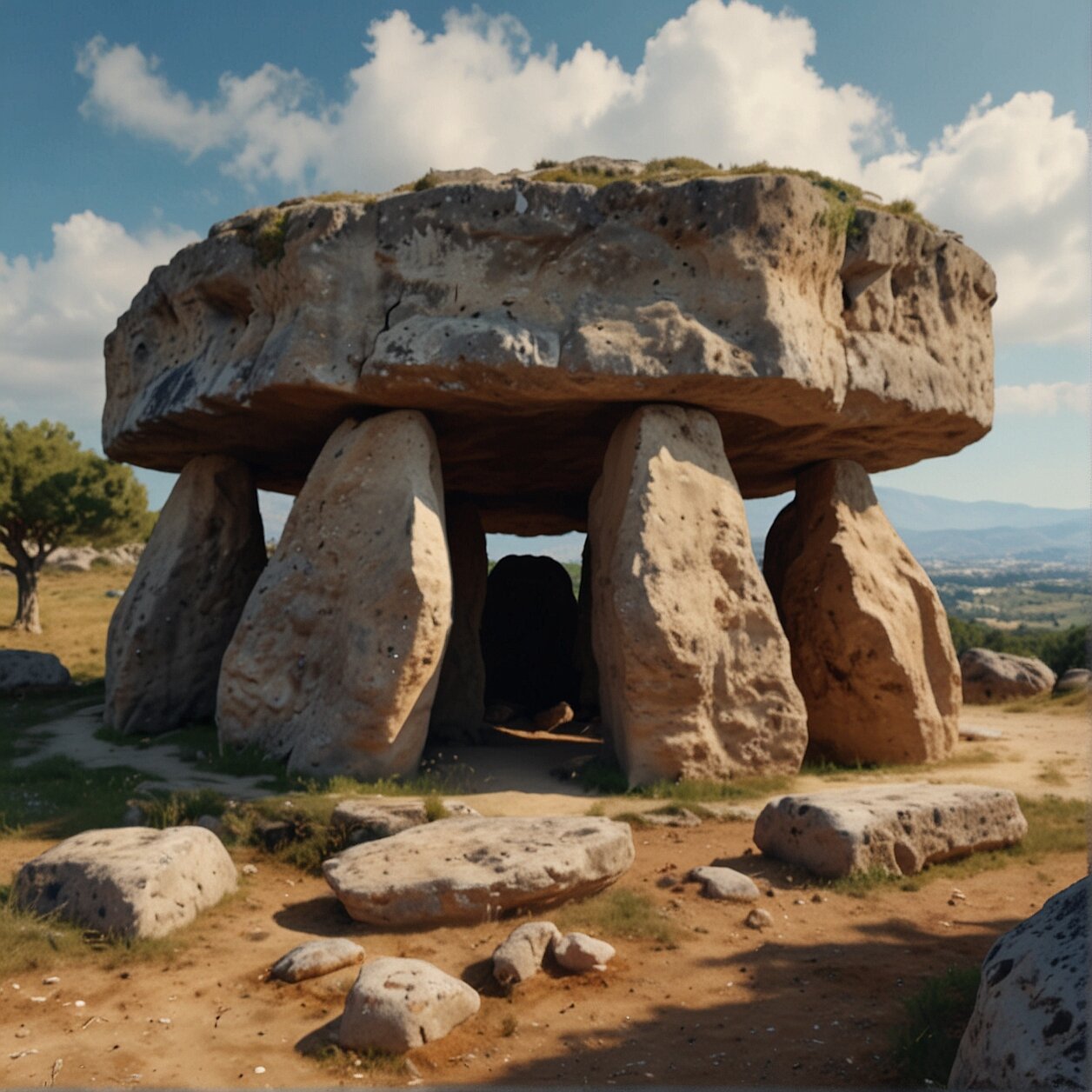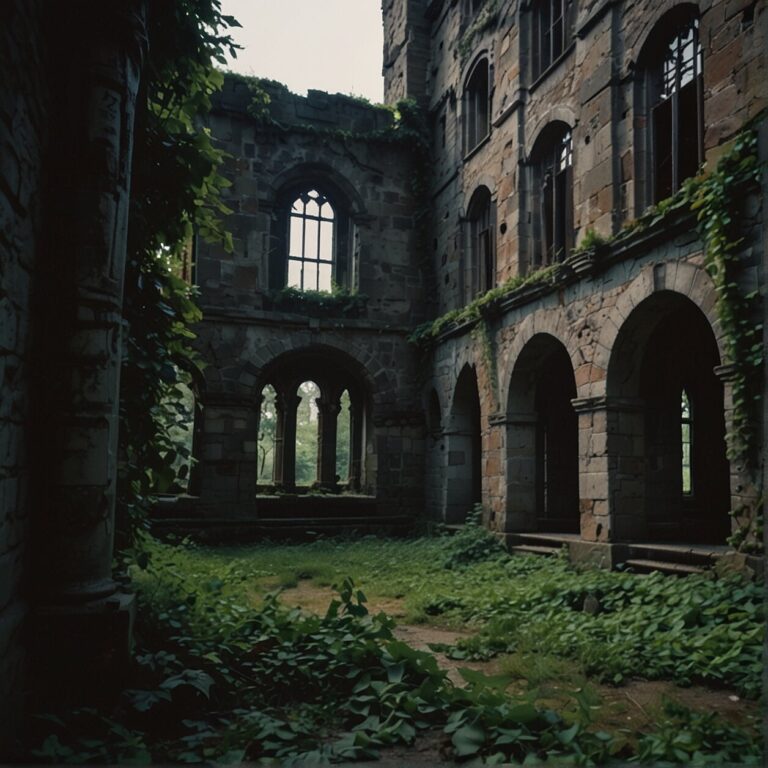Mysterious Stone Circles: Europe’s Lesser Known Megaliths
If you’ve ever felt the sense of awe and mystery when exploring the grandeur of Stonehenge or the curiosities of the Carnac stones, just imagine the thrill of discovering Europe’s lesser-known megalithic sites. These forgotten stone circles, largely hidden from the typical tourist’s eye, are undiscovered treasure troves of history and culture, waiting just for you. Dive into this adventure with us, as we journey through time, unveiling the secrets of these unusual monuments.
In this guide, you’ll:
- Explore mysterious stone circles you’ve never heard of,
- Understand the historical significance of Europe’s lesser-known megaliths,
- Decipher the meanings of ancient carvings, and
- Get an insider’s tips on how to visit these cultural gems.
If you have a curiosity for the unusual, a passion for history, or an adventurer’s spirit, then, my fellow explorers, this is for you. Consider this your invitation to journey off the beaten path, to experience a side of Europe that remains unspoiled by tourist crowds. Pack your bags, your curiosity and let’s set off on this exciting adventure together!
Europe’s Hidden Gems: Mysterious Stone Circles You’ve Never Heard Of
When you set foot in Europe, you’re stepping onto a continent that’s teeming with history, and that extends far beyond the usual tourist traps. While you’re certainly familiar with monuments like Stonehenge and the Great Pyramids, it might surprise you to learn that Europe is home to an abundance of lesser-known megalithic sites – massive stone structures erected by prehistoric societies. These fascinating stone circles, passage graves, dolmens, and standing stones lie scattered across Europe, brimming with ancient stories that are etched deep into their stones.
Take, for example, the prehistoric dolmens of Sicily. These megalithic structures – essentially ancient stone tables – are often overlooked in favor of the island’s more famous Greek temples. However, they provide a chilling glimpse into how our ancestors venerated their dead. There, under enormous stone slabs, the ancients laid their loved ones to rest, marking the site with smaller surrounding stones.
Then there’s Brittany in Northwest France, littered with menhirs, dolmens, and alignments – clusters of megaliths eerily arranged in precise rows. The Carnac stones in particular, with over 3,000 standing stones, are considered one of the most extensive megalithic sites in the world, rivalling even Stonehenge. Radiocarbon dating even suggests they could be Europe’s oldest megalithic structures. Their purpose remains a mystery, though theories abound, ranging from ceremonial use to astronomical sightings.
Over in Ireland, aside from the famous passage graves of Brú na Bóinne, you’ll find the lesser-known Carrowmore megalithic site. Known for its stone circles and passage tombs, there is enough to whet the appetite of the most avid history enthusiast. These stone structures provide us not just a glimpse into ancient burial practices, but also shine light on the architectural prowess of those who constructed them. The intriguing geometric patterns and alignments with celestial bodies show a sophisticated understanding of arithmetic and astronomy, hinting at the highly-evolved nature of prehistoric European societies.
These are but glimpses into the rich tapestry of history that these often overlooked stone circles represent. From Sicily to Ireland, across England and France, Europe’s hidden megaliths offer a fascinating journey into the ancient world. Each structure – whether towering menhir, ghostly stone circle, mysterious dolmen, or architectural passage grave – is a testament to our ancestors’ ingenuity, reflection, and spiritual beliefs.
Understanding the Historical Significance of Europe’s Lesser-Known Megaliths
You may be wondering why these lesser-known megaliths, despite their magnificence, remain concealed gems in the touristic panorama. The reason behind this veil of obscurity is quite complex, entwined with history, cultural preferences, and often, a dash of local politics. Let’s delve a bit deeper, shall we?
The origins of megalithic culture in Europe remain a topic of fervent debate among historians and archaeologists, making these sites an enigma wrapped in a mystery. Some research suggests that this cultural phenomenon emerged as an amalgamation of cultures from Mesolithic West Europeans and Near Eastern farmers who migrated along the Mediterranean coasts. Allied with uncovered fragments of history, the notion weaves an intricate tapestry of cultural diffusion, ancient trade routes, and societal evolution.
Out of the approximately 35,000 ancient monuments scattered across Europe and the British Isles, many remain unexplored. These sites, such as the megalithic structures characterized by portal tombs with upright stones and horizontal capstones, are believed to be among the oldest in Europe based on radiocarbon dating.
These significant yet enigmatic structures were more than just tombs and markers; they were sacred places, hubs of culture, spirituality, and astronomical observations. But stripped of the vibrancy of ancient cultural practices they once brimmed with, these stones often fade into the backdrop of modern life, silent witnesses to a bygone era, waiting patiently for their untold stories to be discovered.
Their silence, however, speaks volumes. Each monolith and stone circle is a window to socio-cultural practices and knowledge systems of a bygone era—an era that revered the earth, followed the celestial bodies, and erected monumental art as a testament to their beliefs. The story of these lesser-known megaliths is the story of humanity, of forgotten civilizations, innovations, aspirations, and an enduring quest for understanding the cosmos. It’s a fascinating narrative, isn’t it?

Journey Through Time: How Stone Circles Shaped Europe’s Past
Imagine seafaring Neolithic craftsmen, their sea-salted hair catching the wind as they hauled heavy slabs atop each other. These ambitious builders left behind more than just mysterious megalithic structures; they sculpted the cultural and historical landscape of Europe for millennia to come.
One of the fascinatingly nebulous aspects of these monuments is their purpose. Stonehenge, arguably the most famous of them all, might come to mind, its true role a subject of endless speculation and controversial theories. However, the lesser-known megaliths scattered across Europe, though shrouded in similar intrigue, offer tantalizing glimpses into the beliefs, rituals, and social systems of the prehistoric communities that built them.
Visitors to the island of Sicily, for example, might stumble upon the Dolmens. These ancient monuments, with their doorway-like entrances pointing skyward, are believed to be the oldest of their kind in Europe. Their presence suggests a connection with the heavens, perhaps indicating a religious or cosmological significance. These profound creations continue to puzzle archeologists today, even as they prompt awe-inspiring reflections on Europe’s ancient past.
On the wild coasts of Northwest France, another set of megaliths whisper tales of a time when the region played a pivotal role in the evolution of Neolithic culture in Europe. Their design, featuring upright stones topped by large, flat slabs, unravels stories of complex prehistoric societies. The structures stand today as cryptic symbols, echoing the voices of ancient societies that understood their environment, erected impressive architectural feats, and largely, defined the underpinnings of Europe’s present.
That’s just scratching the surface. Thousands of these sprawling stone circles remain scattered across the European landscape, each an enigma waiting to be explored. They stand as stoic guardians of bygone eras, each with its unique story, forever inscribed in stone and intertwined with the mysteries of the cosmos.
So, next time you embark on a journey through the old continent, venture off the beaten path and discover these time-worn tales. Remember, through these stones, Europe quietly narrates its stories to those patient enough to listen, stories that unravel profound histories, extraordinary skills, and above all, an abiding human spirit.
The Art of the Ancients: Megalithic Carvings and Their Meanings
Imagine standing in the presence of a stone circle, bearing witness to ancient carvings hewn by hands thousands of years ago. An assortment of symbols, spirals, and strange figures, it’s a coded language of the past, a testament to forgotten lore. But what might these cryptic carvings mean?
Certainly, interpreting these pieces of megalithic art poses a challenge, mainly because the societies that created them didn’t leave behind written records. However, through diligent research, scholars have scratched the surface, drawing tentative lines between the art and the prehistoric cultures they hail from.
For instance, the intricate spirals often found on these monuments may represent the rhythm of nature, the change of seasons, or the cycles of life and death. Repetitive geometric patterns could suggest attempts to bring order to a chaotic world or even denote a form of early written language. Anthropomorphic figures, on the other hand, might refer to a pantheon of deified ancestors, marking these places as sacred sites. It’s all part of the puzzle, and the more you explore, the more pieces fall into place, offering glimpses into an enigmatic past.
But paleolithic art is more than passive observation. It’s an interactive experience. Tracing the lines with your fingers, walking the pattern, even the play of shadow and light can reveal hidden depths to these ancient works. To stand at the foot of these megaliths and to explore these carvings is to have a dialogue with our ancestors, to share in the story they were compelled to tell.
So, don’t just look at these carvings as silent markers of a long-gone era. Try to read, experience, and understand them. After all, each stone, each line, each spiral, they all carry with them a piece of our shared history, linking us to the timeless passion of human creativity.

Road Less Traveled: A Guide to Visiting Europe’s Lesser-Known Stone Circles
You’re intrigued. The mysteries associated with these ideograms etched in stone have filled you with a sense of wonder. Just the thought of roaming through the serene settings where these stone circles are nestled, while soaking in their historic aura, must be an exhilarating prospect. And why wouldn’t it be? You are about to embark on a journey to unravel a segment of the vast history of human civilization that has, until now, been largely untold. So, let’s help you plan your tour through these vestiges of a bygone era.
The Unsung Stone Circles of Sicily
Nestled in sunny Sicily, away from the bustling tourists spots, there’s an untouched historical treasure waiting to be discovered. The Prehistoric Dolmens of Sicily offers a glimpse into the mysticism that encircles our ancestors’ lives. Remember to explore the surrounding landscape as well and feel the connecting thread tying modern life to ancient civilizations.
The Eerie Carnac Stones, Brittany
Cruising further north to Brittany, France, you’ll encounter the enigmatic Carnac stones. A sea of more than 3,000 ancient stones forms a startlingly impressive panorama. Thought to have been erected by pre-Celtic people, they offer a profound insight into the ways our forefathers lived and interacted with the Earth. For a truly profound experience, try visiting during dusk or dawn, when the mysterious aura of the stones is at its strongest.
The Quiet Passage Grave of Gavrinis
While in France, don’t miss the chance to explore the passage grave of Gavrinis. Often overlooked, this ancient burial tomb is adorned with megalithic art and engravings, narrating tales of our predecessors and their beliefs about life, death, and the unknown.
The Mystical Maes Howe, Orkney
Finally, voyage to the Orkney Islands in Scotland, the home of Maes Howe – one of the numerous mystifying stone circles there. The twinkling of the Northern Lights often embellishes the beauty of this awe-inspiring stone circle, creating an otherworldly spectacle.
So, pack your bags and set off on this fascinating voyage through time and space – into the worlds of those who wrote the first chapters of human history. Your adventure awaits!
Embrace the Unknown: Unearthed Mysteries Yet to be Resolved
To conclude, it’s important to remember that while these megalithic sites have sparked the interests of archaeologists and travelers alike, their true significance remains shrouded in mystery. These stone formations are a testament to our ancestors’ remarkable adeptness and ingenuity, ripe for you to discover. Remember, the passage of time may have eroded these beautiful structures, but the enchantment they whisper can still be heard by those who are willing to listen.
FAQ’S
As we delve deeper into the mysteries of Europe’s undiscovered megalithic sites, it’s only natural for questions to arise. This section is designed to satiate your curiosity, addressing frequently asked questions about these awe-inspiring structures. From understanding the significance of these stone circles in the local cultures to discussing the preservation efforts, we’re here to guide you. Read on, and let’s quench that thirst for knowledge together!
Are there any unique cultural practices associated with these megalithic sites?
Indeed, cultural practices surrounding these hallowed megaliths are as varied and intriguing as the structures themselves. These practices, often steeped in antiquity and passed down through generations, offer a peek into the ancient rites and customs that were integral to the societies that built these impressive structures.
At many of these European sites, rituals associated with the Winter and Summer Solstice are commonly observed. These celestial events hold significant historical importance as many megalithic structures were built with precise astrological alignments. Gatherings are held at these sites where members of the local communities, history enthusiasts, and visiting tourists come together to experience sunrise or sunset that perfectly aligns with specific points of the stone circles. These moments, illuminating ancient knowledge and ingenuity, create a deeply spiritual connection to the past.
For instance, at the Maes Howe tomb in the Orkney Islands, the winter solstice sunset illuminates the entrance passage, casting a beautiful spectacle for observers. In Brittany, locals traditionally gather at the Carnac stones to honour their Celtic heritage through music, dance, and storytelling during the summer solstice. Such ceremonies are not merely historical reenactments but hold a deep cultural significance that underscores the reverence for these mysterious megalithic sites.
Beyond the solstice gatherings, some megaliths serve as ossuaries or burial grounds which are significant sites of remembrance. Annual rituals, often linked to ancestor worship, are carried out at these cemeteries by local communities. While paying respect to their ancestors, these rituals also provide a sense of continuity between past and present, connaturally binding the living with their lineage. It is not uncommon to see flowers, candles, or small offerings left at these sites as a tribute to the bygone era.
Understanding these deeply-rooted cultural practices enhances our appreciation of the significance of these megalithic sites in moulding Europe’s societal and cultural fabric. Not only do these practices act as a living testament to Europe’s rich historical and cultural legacy, they also keep alive the narratives and the spirit of ancient civilizations.
How are these lesser-known megaliths preserved and protected?
Preservation and protection of Europe’s lesser-known megaliths is indeed a critical task. These captivating stone structures, still standing after millennia, serve as remarkable markers of time and history. That said, the task of preserving them goes beyond just heritage conservation.
Primarily, the preservation of megalithic structures involves careful monitoring and archaeological assessment. Through these processes, any signs of erosion, weathering, vandalism, or other forms of damage can be detected early. Routine maintenance and repair works, in consultation with expert archaeologists and conservators, help to prevent further deterioration.
Several megaliths are deemed protected sites by local or national governments, and some have even been recognized by UNESCO as World Heritage Sites. This status not only highlights their cultural and historical importance but also helps to secure necessary funding and resources for their maintenance. Furthermore, protective laws are often enacted to prohibit activities that could potentially harm these sites. Strict regulations restrict construction work and limit tourist access to avoid any accidental damage/
In addition, local communities often play a crucial role in the preservation of these intriguing monuments. Many regard the megaliths as an integral part of their cultural heritage and contribute actively to their maintenance and protection. Numerous educational programs and guided tours are also organized to foster a sense of responsibility toward the preservation of these relics of the past among the general public.
Finally, scholars and researchers continue to study these stone structures, enhancing our collective understanding and highlighting their significance. Continued investigation into these sites ensures their ongoing preservation and analysis to unravel their many absorbing secrets.
Where can I find mysterious stone circles in Europe?
Europe is a treasure chest brimming with hidden megalithic sites that are dappled throughout its vibrant landscapes. One of them being the enchanting Cromlech of the Almendres in central Portugal. Having been constructed in the 6th millennium BCE, it wears the crown as the oldest megalithic structure in Europe.
The mystique and charm of these sites aren’t limited to Portugal alone. Let your curiosity take you to Sicily’s prehistoric dolmens. They silently narrate the tale of the island’s rich and storied past, through their inexplicable architecture and enigmatic presence.
Next, venture into Brittany, France where the beguiling Carnac stones reside. These enigmatic stones stand in perfect harmony, bearing witness to the ancient civilizations that thrived in the cradle of historic Europe.
The journey through Europe’s submerged historical narrative doesn’t end here. The British Isles are home to intriguing monuments, their origins shrouded in mystery. One such marvel is the Maes Howe in Orkney, posing an unending puzzle to historians and archaeologists alike.
It’s worth noting that the genesis of these prehistoric structures remains a subject of debate amongst historians. Many believe Europe’s megalithic culture emerged as a blend of elements from Mesolithic West Europeans, fused with the ways of the Near Eastern farmers who had journeyed along Mediterranean coastlines. Your journey into Europe’s quieter pockets of history will offer not just a glimpse, but a deep dive into the rich tapestry of cultural and architectural evolution that awaits discovery.
What role do these megalithic sites play in local European cultures?
Megalithic sites hold considerable place and importance in the cultures of European societies. Often shrouded in tales derived from ancient times, many of these structures serve as pivotal touchstones connecting present cultures with their historical roots. In some cases, they continue to play an integral role in community traditions and ceremonies.
Just as these megaliths have withstood the weathering by time, so too have the legends and reverence bestowed upon them by locals. These age-old traditions provide each community with a sense of identity and unique heritage.
For instance, consider the Carnac stones in France. Stretches of thousands of rock pillars of varying heights, these megalithic sites are treated like an open-air museum, drawing in locals and tourists alike. The geologically puzzling arrangement of these stones has given birth to various myths and legends that have become ingrained in local culture.
These megalithic sites are not only reserved for historical curiosity or cultural representation but also play an essential role in festivals and rituals. The summer solstice, most notably, is often celebrated in these mysterious stone circles. These rituals allow an otherwise past and intangible history to become a live, shared experience amongst community members.
In conclusion, these megalithic sites are not mere tourist attractions. They are deeply entwined with the identity and culture of communities, continuing to shape the narrative and tradition of local European societies.
What can we learn from the construction techniques of these mysterious stone circles?
One of the most fascinating aspects of exploring Europe’s lesser-known megalithic sites is delving into the impressive construction techniques used by our prehistoric ancestors. When you consider the magnitude of these stone structures, you may wonder about the ingenuity required to build these monumental works, often weighing several tons, without modern tools and technology.
It’s speculated that the construction of these monuments was a community effort, drawing in large groups of people for not only the physical labor, but also for communal rituals and gatherings. Evidence indicates that these structures were not hastily built, but were products of careful planning and meticulous execution that often spanned generations.
Quite remarkably, the positioning of many these megalithic structures suggests a deep understanding of astral patterns. Many are aligned with specific points on the horizon that correspond to astronomical events like the solstice and the equinox. Structures like Ireland’s Newgrange passage tomb and the Maes Howe in Orkney are famous examples of this.
The stones used in the construction of these monuments were carefully selected, often transported from considerable distances. For instance, the dolmens – portal tombs traditionally composed of two upright stones and a capstone, present evidence of skilled manipulation of heavy materials. Pondering upon this aspect provokes additional admiration for the people who, thousands of years ago, engineered these magnificent structures with resources that were only naturally available.
The mysteries revolving around these construction techniques are numerous, and while some have been partially unraveled, many continue to confound modern scientists. Each site is a testament to the creativity and resilience of the human spirit, defying time to tell tales of a past that laid the foundations of European civilization as we know it today.
So, when you embark on a journey through these silent tales etched in stone, remember the immense effort that went into their creation. You’ll not only gain a greater understanding of our ancient past, but you’ll also be walking in the footsteps of the ingenious builders who forever left their mark on history.







